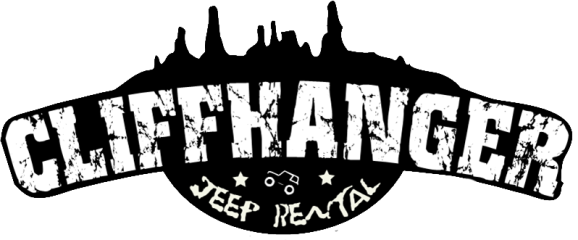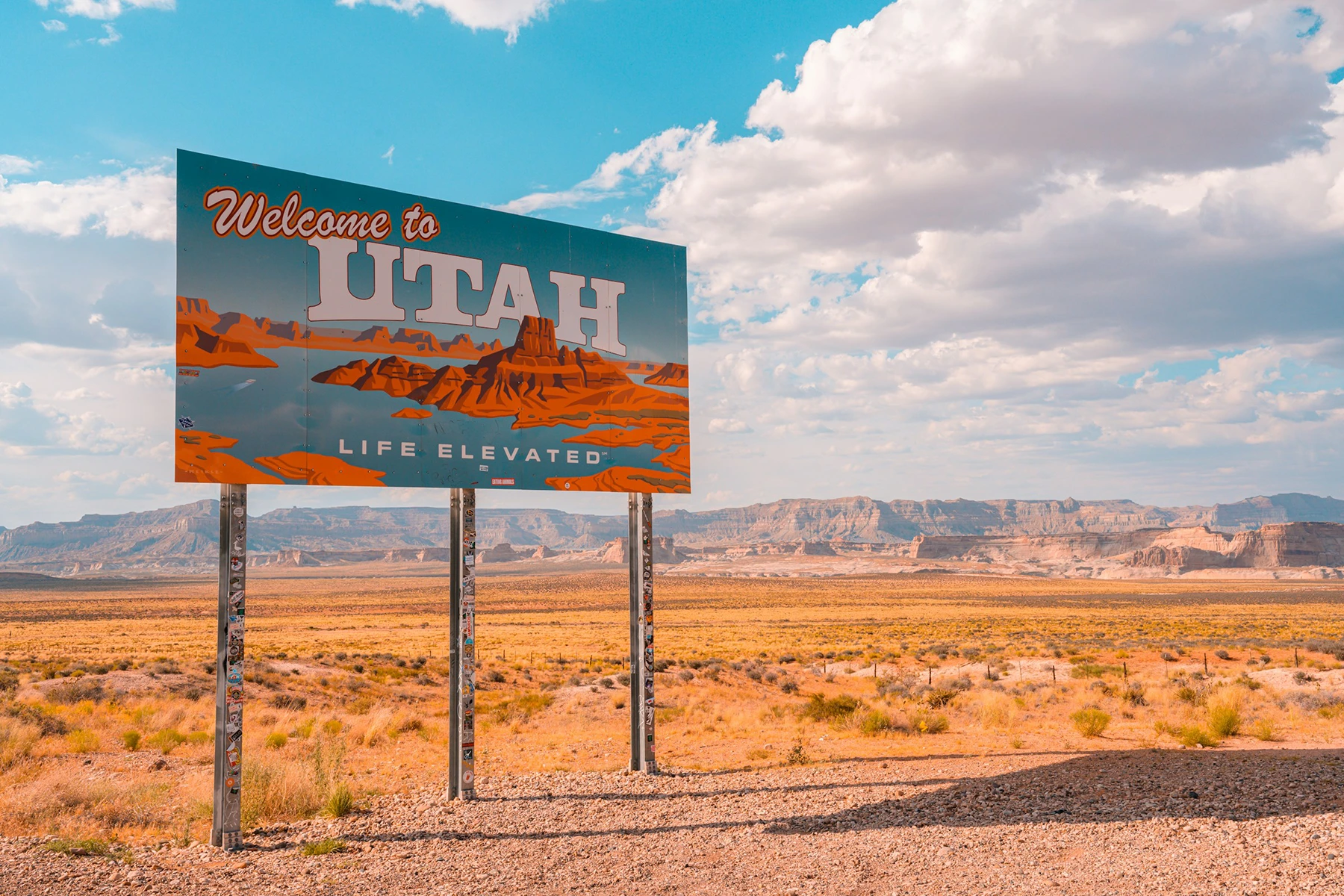Why Outdoor Activities in Utah Draw Adventurers From Around the World
Utah doesn't do anything halfway. The same forces that carved the Grand Canyon spent millions of years sculpting an entire state into a playground of extremes. You've got rust-red deserts that look like another planet, mountain peaks that scrape 13,000 feet into thin air, slot canyons so narrow you can touch both walls at once, and salt flats so vast and white they mess with your sense of scale. This kind of variety doesn't exist in many places on Earth, and people who chase adrenaline have figured that out.
What Makes Utah Different
Most states give you one type of terrain to work with. Utah hands you five distinctly different ecosystems, each with its own personality and challenges. You can ski powder in the morning and mountain bike through red rock in the afternoon if you time it right. The weather cooperates more days than it doesn't, the crowds thin out fast once you leave the parking lots, and the public land access means you're rarely fenced out of anywhere worth going.
Desert lowlands around Moab offer year-round access to trails and routes
High-altitude Wasatch and Uinta ranges provide alpine environments and snow sports
Canyon systems create natural corridors for exploration and technical adventure
Minimal light pollution in remote areas preserves night sky visibility
Four distinct seasons multiply the ways you can experience the same landscape
What You'll Find in This Guide to Outdoor Activities in Utah
This isn't a list of Instagram spots or a ranking of the "top ten" anything. You'll get practical information about the different types of adventures waiting for you here, organized by landscape and season. We'll cover what actually works, what you need to know before you go, and how to pick the right activity for your skill level and timeline.
Detailed breakdowns of desert, canyon, mountain, and water-based activities
Seasonal considerations that affect access and conditions
Real talk about permits, safety, and preparation
Base camp recommendations for different regions
Honest assessments of difficulty and time requirements
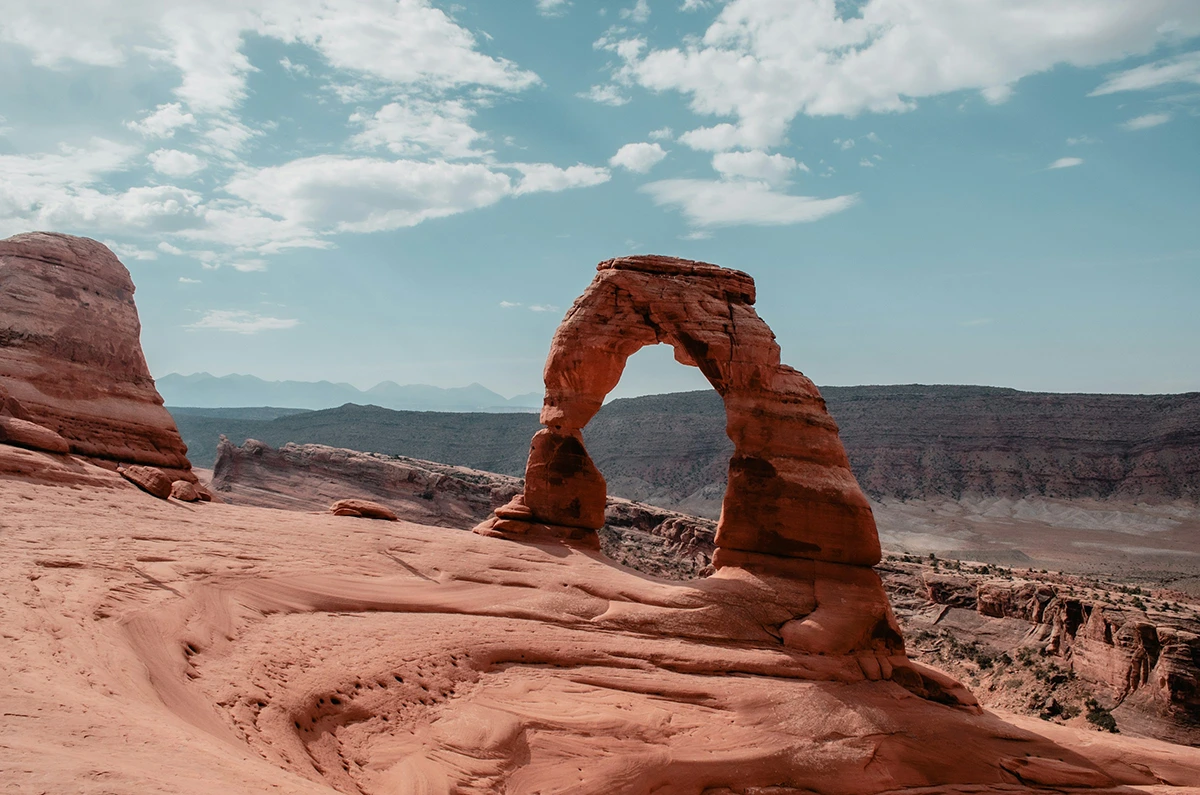
The Desert Playground: Red Rock Country
The Colorado Plateau around Moab represents something close to perfection for people who like their landscapes dramatic and their adventures dusty. Navajo sandstone dominates the geology here, creating formations that took 200 million years to shape and about five minutes to fall in love with. The rock glows orange at sunrise, shifts to deep red by midday, and turns purple as the sun drops. You're surrounded by Arches National Park to the north, Canyonlands to the west, and enough Bureau of Land Management territory in between to keep you busy for years.
Off-Roading and 4x4 Trails
Moab built its reputation on trails that separate capable vehicles from pavement queens. The terrain here demands high clearance, good articulation, and a driver who knows when to use low range. Some routes follow old mining roads that haven't been maintained since the uranium boom went bust. Others wind through technical rock gardens where line choice matters more than horsepower.
Getting out here requires the right equipment, and that's where Cliffhanger Jeep Rentals in Moab comes in. They stock vehicles already set up for the punishment these trails dish out—lifted suspensions, all-terrain tires, skid plates, and recovery gear. You can roll out of town within an hour of picking up your rental and be deep into places most people only see in photos.
Hell's Revenge offers slickrock challenges and the famous Lion's Back obstacle
Poison Spider Mesa combines technical sections with exposure and views into the Colorado River gorge
White Rim Road in Canyonlands provides 100 miles of remote desert touring
Fins and Things delivers roller-coaster terrain accessible to intermediate drivers
Pritchett Canyon tests even experienced wheelers with rock crawling and steep descents
Onion Creek route follows a scenic canyon with multiple water crossings
Rock Climbing Spots
The desert towers and walls around Moab attract climbers who prefer adventure over convenience. The rock quality varies—some sandstone holds solid, some crumbles if you look at it wrong. Protection can be tricky to place, approaches often involve hiking or scrambling, and you're usually dealing with desert sun and exposure. But the routes here offer something gyms can't replicate: commitment and consequence in stunning settings.
Castleton Tower stands as one of the classic desert spires, with multiple routes to the summit
Wall Street near Potash Road features sport climbing on Wingate sandstone
Indian Creek's splitter cracks have achieved legendary status among trad climbers
Fisher Towers provide multi-pitch adventures on questionable rock with serious exposure
Ice Cream Parlor offers moderate routes good for warming up or learning desert techniques
Mountain Biking
Before Moab became an off-roading mecca, mountain bikers discovered it first. The slickrock terrain creates natural bike parks where traction works differently than anywhere else. Routes range from mellow scenic cruises to technical descents that'll have you walking sections. The Slickrock Bike Trail alone draws tens of thousands of riders each year, and it's just one option among dozens of world-class systems.
Mountain biking stands out among outdoor activities in Utah's desert regions because the season runs nearly year-round. Winter days often stay warm enough to ride, spring brings perfect temperatures, fall offers comfortable conditions after the summer heat breaks, and even summer mornings work if you start early enough. The variety of terrain means you can match trails to your skill level and still feel challenged.
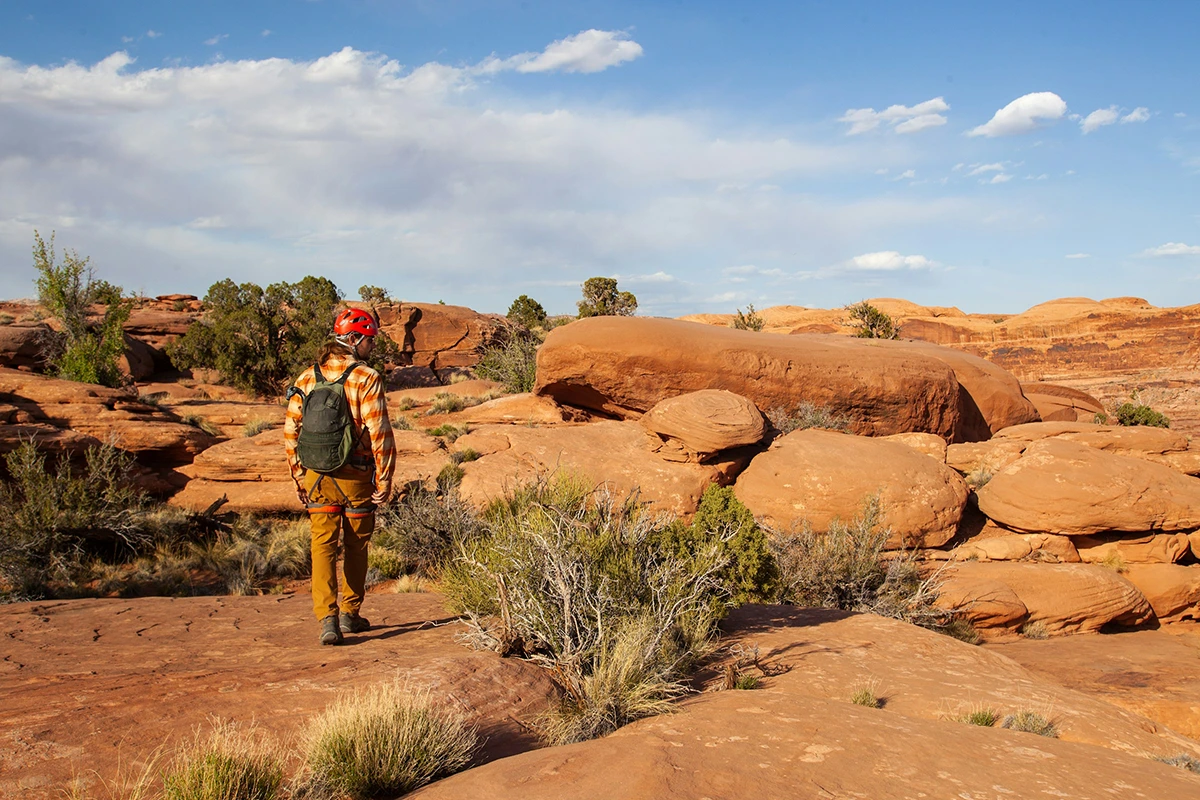
Canyon Country Adventures
Water spent millions of years cutting through sandstone to create some of the most intricate slot canyons on the planet. These narrow passages twist through rock in ways that feel almost designed, with light filtering down from above and walls that curve like frozen waves. Getting into them requires different skills than hiking or climbing—you're working in three dimensions, solving problems with rope work, body positioning, and route-finding. The rewards justify the effort: places so beautiful and strange they reset your baseline for what landscape can look like.
Slot Canyon Exploration
The slot canyons near Escalante and in the San Rafael Swell offer everything from easy walk-through corridors to technical descents requiring rappels and swimming. Flash flood danger is real here, so you check the weather forecast obsessively and never enter a slot when storms threaten anywhere in the drainage. Inside these passages, you might wade through pools, chimney up between walls, or squeeze through sections barely wider than your shoulders.
Buckskin Gulch runs for 13 miles as one of the longest slot canyons anywhere
Little Wild Horse Canyon provides a beginner-friendly introduction with no technical skills required
Peek-a-Boo and Spooky Gulch connect for a loop that includes tight squeezes and short climbs
Zebra Slot near Escalante features striped walls and waist-deep water sections
The Subway in Zion requires permits and combines hiking with technical canyoneering
Canyoneering Basics and Popular Routes
Canyoneering takes slot canyon exploration further by adding rope work, anchor building, and downclimbing to your toolkit. You're descending waterfalls that don't flow anymore, rappelling into pools, and navigating terrain where turning back isn't always an option. This discipline ranks among the more technical outdoor activities in Utah, but progression routes exist for people willing to learn the skills properly and build experience gradually.
Start with guided trips or courses that teach anchor assessment, rope management, and rescue techniques. The consequences of mistakes in remote canyons are severe, and cell service rarely exists where you need it. Once you've got the basics down, routes like Pine Creek in Zion, Leprechaun Canyon near Hanksville, and Orderville Canyon provide stepping stones toward more difficult objectives.
Hiking Through Dramatic Gorges
Not every canyon requires technical skills or equipment. Some of Utah's most impressive gorges open up to anyone willing to walk a few miles. The Narrows in Zion lets you wade upstream through a river canyon where walls rise a thousand feet on either side. Capitol Reef's slot canyons offer similar drama with fewer crowds. These hikes give you the canyon experience without the commitment of technical descents.
The Narrows bottom-up route covers 9.4 miles of river walking with no permit required for day hikes
Grand Gulch near Bluff combines canyon hiking with Ancestral Puebloan ruins
Paria Canyon runs 38 miles from Utah into Arizona with permits required for overnight trips
Courthouse Wash near Moab follows a wide canyon with petroglyphs and easy access
Crack Canyon in the San Rafael Swell delivers slot canyon scenery on a moderate day hike
Photography Opportunities
The way light behaves in slot canyons creates conditions photographers chase. Beams of sunlight angle down through narrow openings, illuminating dust particles and painting sections of wall while leaving others in shadow. The color palette shifts from orange to red to purple depending on time of day and how the rock reflects ambient light. Upper Antelope Canyon near Page gets the fame, but Utah's slots offer similar magic with better chances of having the place to yourself.
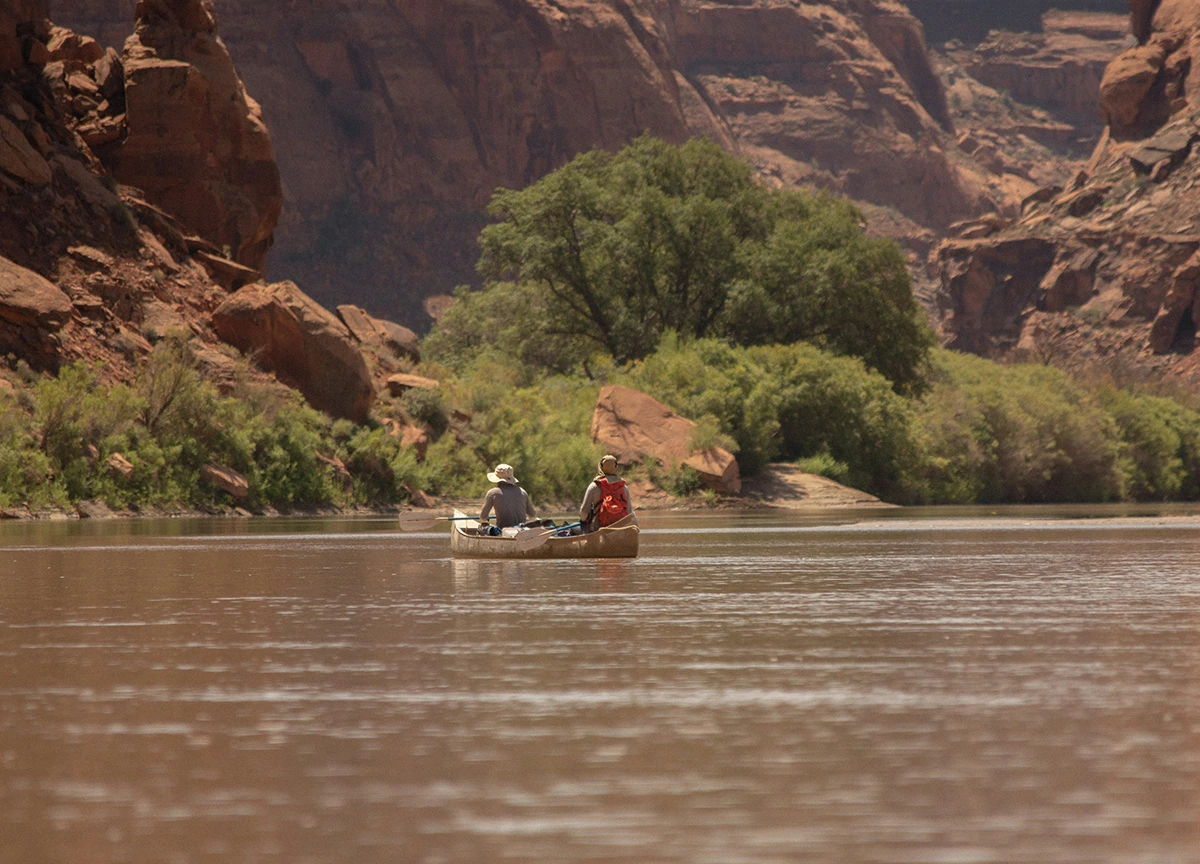
Water-Based Recreation
Finding water in the desert feels like discovering a secret the landscape tried to keep hidden. Utah's rivers carved the canyons you see everywhere, and the reservoirs created for water storage accidentally built recreation areas surrounded by some of the most dramatic scenery in the Southwest. The contrast between red rock and blue water creates visuals that don't look quite real, and the temperatures during summer make these spots essential refuges from heat that regularly pushes past 100 degrees.
Lake Powell Adventures
Lake Powell stretches 186 miles behind Glen Canyon Dam, with nearly 2,000 miles of shoreline that winds through side canyons and around sandstone formations. The lake lets you access areas that would take days of hiking to reach otherwise. Houseboating is the classic approach here—rent a floating platform and post up in some remote arm of the lake where you can swim, explore side canyons by kayak, and watch the rock walls change color as the sun moves across the sky.
Jet skis, wakeboarding, and fishing all work on the main channels, while the narrow side canyons reward exploration by smaller watercraft. Rainbow Bridge, one of the largest natural bridges on Earth, sits accessible only by boat or a difficult overland hike. Water levels have dropped in recent years due to drought, exposing previously submerged canyons and changing access to some areas, but the lake still offers hundreds of miles of shoreline to work with.
River Rafting
The Colorado and Green Rivers move through canyon systems that defined the western river running scene. These aren't theme park rides—you're dealing with real current, real rapids, and multi-day trips that put you deep into wilderness where help doesn't exist. Cataract Canyon on the Colorado drops through serious whitewater with rapids that reach Class V during high water. Desolation Canyon on the Green provides a more moderate experience with five to seven days of floating through remote country.
When people talk about outdoor activities in Utah that change how you see the landscape, multi-day river trips usually make the list. You're moving at the pace water dictates, camping on sandbars, and watching canyon walls slide past for hours at a time. Commercial outfitters handle the permits and logistics if you want a guided experience. Private trips require winning permit lotteries and having the skills to handle your own support and safety.
Cataract Canyon offers 26 major rapids over 14 miles below the confluence of the Green and Colorado
Desolation Canyon runs 84 miles with Class II-III rapids and excellent camping
Westwater Canyon provides a shorter trip with Class III-IV whitewater in a granite gorge
Labyrinth Canyon delivers flatwater floating through twisted canyon country
Daily permits available for calmer sections near Moab for shorter adventures
Stand-Up Paddleboarding and Kayaking
Flat water sections of Utah's rivers and the calm areas of reservoirs work perfectly for paddling without committing to multi-day expeditions. Stand-up paddleboarding has taken off in places like Sand Hollow Reservoir near St. George and the quieter sections of Lake Powell. The learning curve is gentle, the equipment is relatively cheap, and you can cover surprising distances once you get your balance sorted out.
Kayaking opens up exploration of side canyons too narrow or shallow for motorized boats. You can paddle into slot canyons that fill with water, investigate alcoves and arches from water level, and access beaches and camps that see almost no traffic. The San Juan River near Bluff offers a mellow float through desert country with ancient ruins visible from the water. Bear Lake up north near the Idaho border provides alpine paddling with turquoise water that looks tropical despite sitting at 6,000 feet elevation.
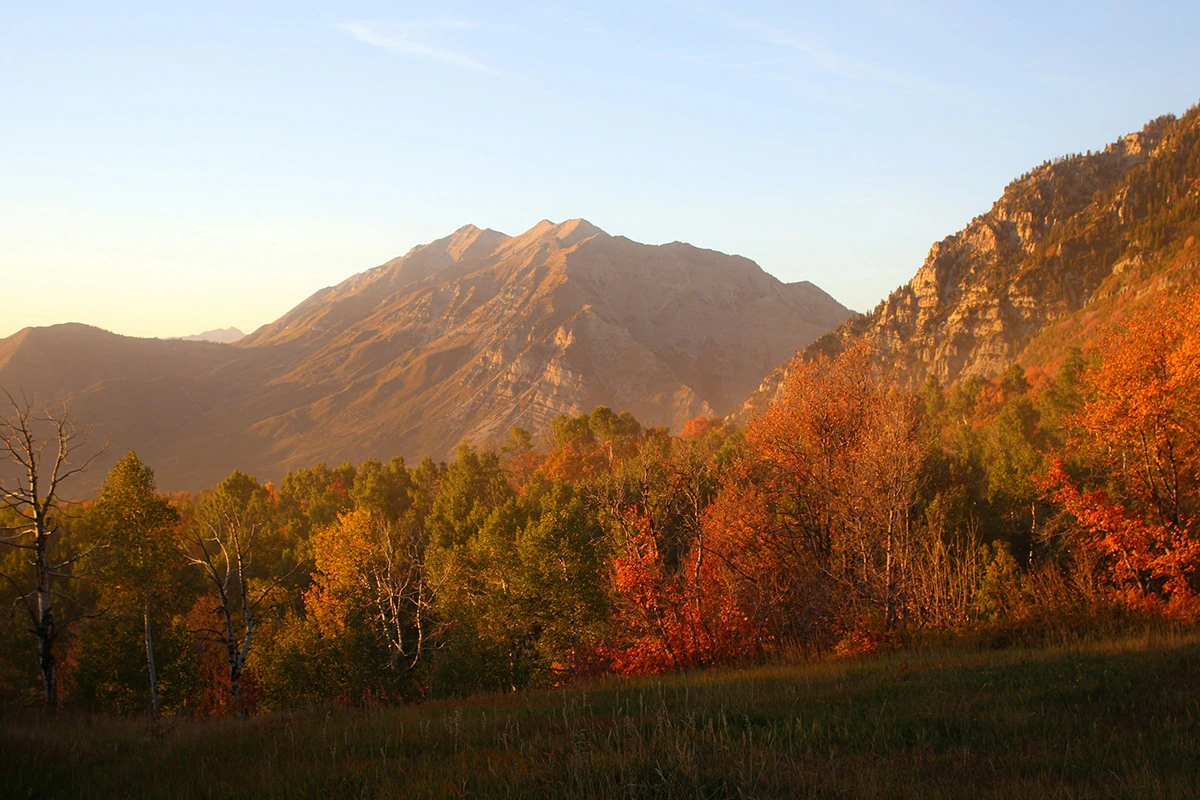
Best Outdoor Activities in Utah by Season
Utah's elevation range creates multiple climates operating simultaneously. When the desert around Moab bakes at 105 degrees in July, the high Uintas stay cool enough for comfortable hiking. When winter snow closes mountain passes, the southern desert offers perfect conditions for climbing and biking. Understanding these seasonal shifts lets you pick the right location and activity for any time of year, turning Utah into a place you can visit in January or August and still find excellent conditions somewhere.
Spring (March-May): Wildflowers explode across desert areas while snowmelt feeds waterfalls and fills slot canyons. Temperatures in canyon country hit the sweet spot before summer heat arrives. High-altitude areas remain snowed in until late May, but lower elevation trails dry out and become accessible. This is prime time for moderate desert hikes, early season climbing, and catching slot canyons with flowing water.
Summer (June-August): The desert becomes hostile during midday, with temperatures regularly exceeding 100 degrees and exposed rock too hot to touch. Smart adventurers shift to high-altitude zones where temperatures stay 20-30 degrees cooler. The Wasatch and Uinta ranges open up for backpacking, alpine lake exploration, and peak climbing. Water activities on rivers and reservoirs become necessary rather than optional. Early morning or evening desert adventures still work if you time them right.
Fall (September-November): This might be the best season for outdoor activities in Utah if you're keeping score. Desert temperatures drop back into the comfortable range, making all-day adventures possible again. High-elevation aspen groves turn gold and orange, creating landscapes that look photoshopped. Crowds thin out after Labor Day, and you'll often have trails and campsites to yourself. Rock climbing conditions in places like Indian Creek reach perfection, and mountain biking season hits its stride.
Winter (December-February): Snow transforms the Wasatch into one of the country's premier skiing destinations, with resorts claiming "the greatest snow on Earth" and backcountry options for people who prefer earning their turns. The southern desert sees occasional snow that melts within days, leaving long stretches of clear, cold weather perfect for solitary exploration. You can ski powder in the morning and four-wheel through snow-dusted red rock in the afternoon if you position yourself right.
Making Seasonal Choices Work For You
The seasonal variation means you need to match your visit timing to your priorities. Chasing wildflowers? Plan for April or early May in the desert. Want to avoid crowds while hiking Zion or Arches? Pick late fall or winter weekdays. Looking to combine multiple activities in one trip? Spring and fall offer the widest windows when both high and low elevations remain accessible.
Weather can shift fast here regardless of season. Spring storms dump snow in the mountains while the desert gets rain that turns dirt roads into impassable mud. Summer monsoons bring afternoon thunderstorms that create flash flood danger in canyons. Fall usually stays stable, but winter storms can close highways and strand you if you're not paying attention to forecasts. Check conditions before you commit to remote areas, and always have backup plans for when weather doesn't cooperate.
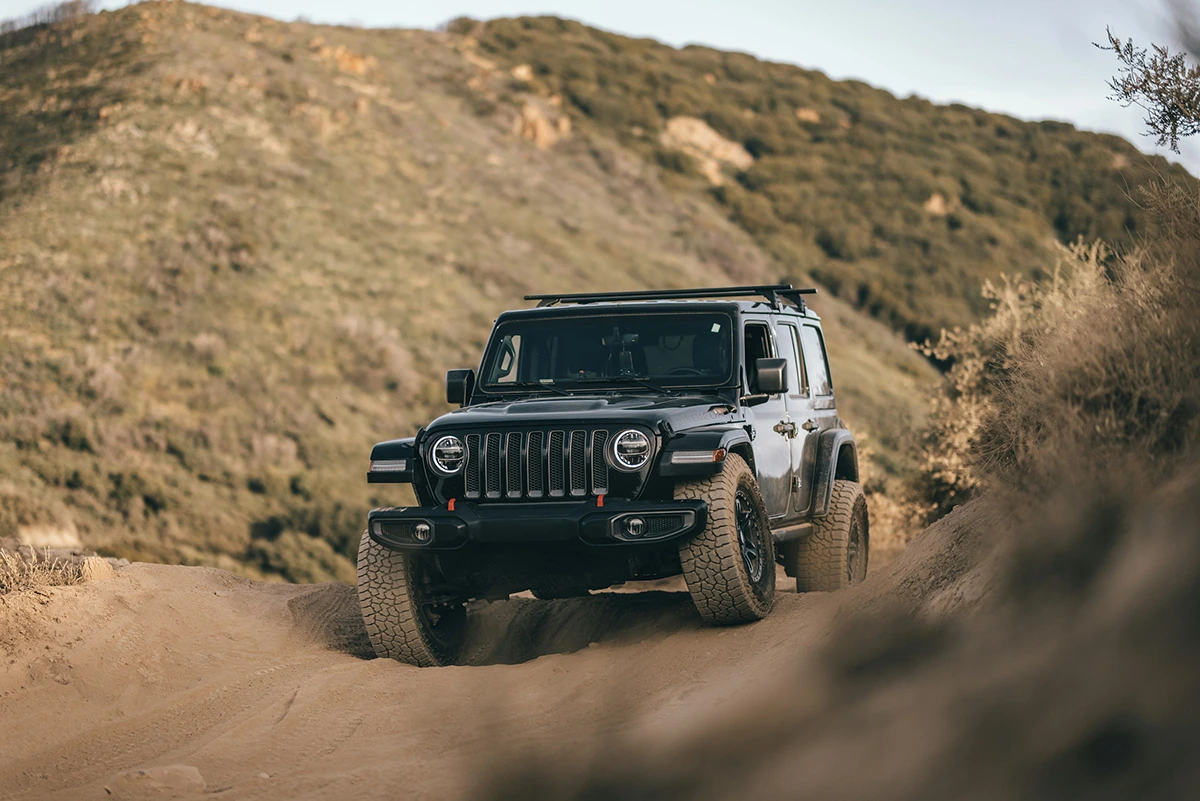
Planning Your Utah Adventure
The difference between a great trip and a miserable one often comes down to logistics you sorted out before leaving home. Utah's public lands sprawl across massive distances with limited services, spotty cell coverage, and regulations that vary by agency and location. Getting the planning right means you spend more time doing what you came for and less time dealing with problems that were preventable.
Choose your base camp strategically: Moab puts you close to Arches, Canyonlands, and endless off-road trails. Springdale gives you walking access to Zion. Torrey works as a hub for Capitol Reef and the Escalante region. Salt Lake City provides quick access to Wasatch skiing and serves as a jumping-off point for longer drives south.
Book accommodations early during peak season: Spring and fall see heavy traffic in popular areas, and hotels fill up fast. Camping reservations for developed sites often require booking months ahead. Dispersed camping on BLM land offers free alternatives with more solitude but fewer amenities.
Factor in drive times: Utah is bigger than it looks on a map. Moab to Zion takes five hours. Salt Lake to Moab takes four. If you're trying to hit multiple regions, you'll spend significant time covering ground between destinations.
Stock up on supplies in towns: Once you leave populated areas, services disappear for long stretches. Fill your gas tank when you see stations, carry extra water, and pack food that doesn't require refrigeration if you're camping.
Permit Requirements and Regulations
Different agencies manage Utah's public lands, and each has its own permit system and rules. National parks require entrance fees and often need advance reservations for popular trails or campsites. Some canyoneering routes require permits that you apply for through lotteries months ahead. Other areas operate on a first-come basis or don't require permits at all.
Zion's Angels Landing and The Narrows require permits obtained through a lottery system and same-day draws
Canyonlands backcountry permits book up fast for spring and fall weekends
Wave permits in the Vermilion Cliffs use a lottery with low odds of winning
Most BLM land allows dispersed camping without permits but follow Leave No Trace principles
Check fire restrictions before planning campfires—many areas ban them seasonally
Some slot canyons require technical canyoneering permits and proof of experience
What to Pack for Different Activities
Desert and mountain environments demand different gear, but some basics apply across the board. Water carries more weight than any other consideration—dehydration will end your trip faster than almost anything else. Sun protection matters year-round since UV exposure increases with elevation and reflects off light-colored rock. Navigation tools save you when trails disappear or cell service drops to nothing.
Desert essentials: Two liters of water minimum per person for short hikes, more for longer trips. Sun hat, sunglasses, and SPF 30+ sunscreen. Layers for temperature swings between day and night. Sturdy boots for sharp rock and cactus-filled terrain.
Mountain requirements: Extra layers including insulation for sudden weather changes. Rain gear even when forecasts look clear. Trekking poles for steep terrain and stream crossings. Bear canister or proper food storage for overnight trips.
Off-roading gear: Recovery equipment including tow straps, shovel, and traction aids. Full-size spare tire and tools to change it. Extra food and water in case of breakdown. Communication device for emergencies since cell service rarely exists on trails.
Canyoneering setup: Static rope rated for the longest rappel on your route. Harness, rappel device, and locking carabiners. Wetsuit or drysuit for water-filled canyons. Waterproof bag for electronics and dry clothes.
Safety Considerations for Desert and Mountain Environments
Utah's landscapes look beautiful but don't care whether you make it home safely. The state sees regular rescues and fatalities from people who underestimated conditions or overestimated their abilities. Most accidents are preventable through honest self-assessment and proper preparation.
Flash floods kill more people in slot canyons than any other hazard. Never enter a narrow canyon when rain threatens anywhere in the drainage basin. Weather systems can dump water 20 miles upstream that arrives as a wall of debris-filled water with no warning. If you see clouds building or hear distant thunder, get out immediately.
Heat exhaustion and dehydration sneak up on people in the desert, where dry air pulls moisture out of your body faster than you notice. Drink water before you feel thirsty, take breaks in shade, and recognize early symptoms like headaches, dizziness, or reduced urination. Carry more water than you think you need—running out is not an option in remote areas.
Getting lost happens easier than people expect, even with GPS devices that fail when batteries die or signals drop. Paper maps and compass skills still matter as backup. Tell someone your plans and expected return time before heading into backcountry. Knowing the general direction back to civilization can save your life when technology quits.
Wildlife encounters remain relatively rare, but mountain lions, bears, and rattlesnakes all live here. Make noise while hiking to avoid surprising animals. Store food properly in camp. Watch where you put your hands and feet in rocky areas where snakes hide from heat. Most animals want nothing to do with you and will leave if given the chance.
The learning curve for outdoor activities in Utah rewards people who start within their skill level and build up gradually. Trying to jump straight into advanced canyoneering or technical climbing without proper training leads to dangerous situations in places where rescue takes hours or days. Take courses, go with experienced friends, or hire guides for activities that push your current abilities.
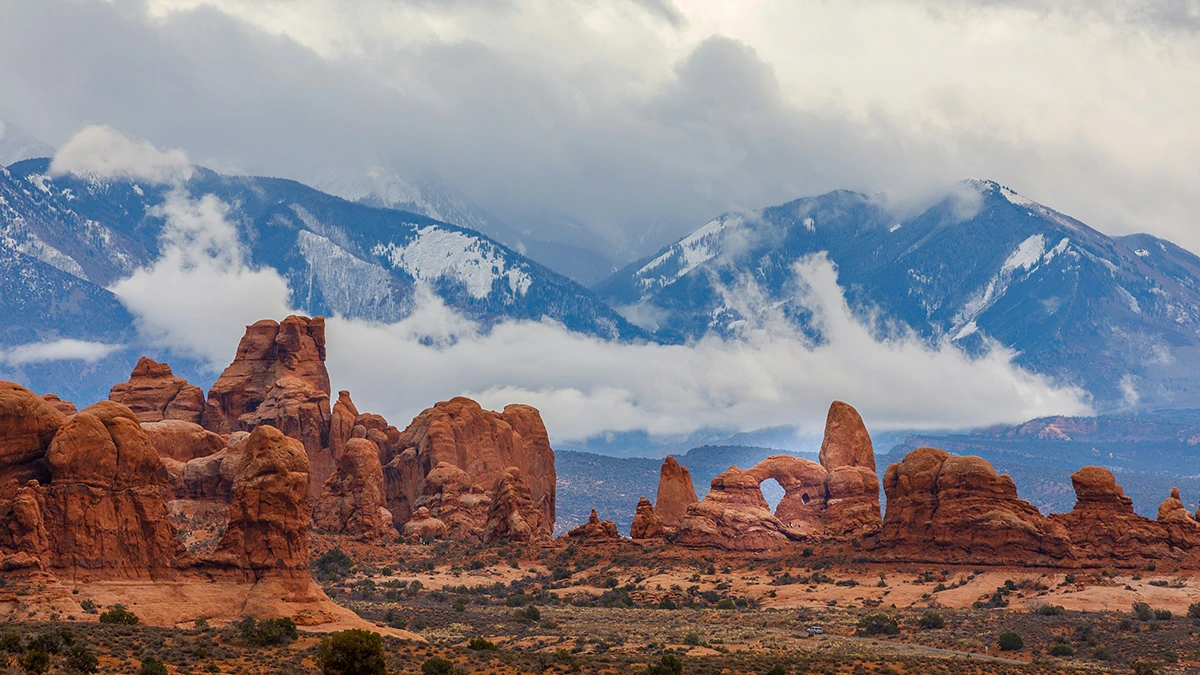
Get Out There and See What You've Been Missing
Utah exists in a category of its own when it comes to accessible adventure. You don't need months of planning or expedition-level experience to have remarkable days in these landscapes. Most of what you've read about here sits within reach of anyone willing to drive a few hours and walk a few miles. The rock, the water, the mountains, and the canyons will all be here long after you're gone—they've already been here for millions of years and aren't going anywhere. But your time to see them is limited, and reading about places doesn't compare to standing in them.
The outdoor activities in Utah that change people aren't always the most extreme ones. Sometimes it's a simple sunrise over red rock or a quiet evening watching stars appear over canyon walls. The state hands you opportunities to step away from the noise and remember what it feels like to be small in a landscape that operates on geological time scales. Whether you're here for technical challenges or just want to see something beautiful, you'll find both without much effort.
Ready to Explore? Cliffhanger Jeep Rentals Has You Covered
The best trails and most impressive scenery in the Moab area sit at the end of rough roads that regular vehicles can't handle. That's where Cliffhanger Jeep Rentals in Moab comes in. We stock fully-equipped Jeeps built for the terrain—lifted, armored, and ready to take you places most people never reach. Pick up your rental in Moab and you're minutes away from legendary trails like Hell's Revenge, Poison Spider Mesa, and countless BLM routes that don't even have names yet.
No guessing about whether your vehicle can handle the obstacles. No worrying about damaging your personal rig on sharp rocks or steep descents. Just grab the keys, get the quick orientation on features and recovery points, and head out to see what this desert really looks like when you get off the pavement. Book your Jeep rental today and turn those route maps into actual memories.
